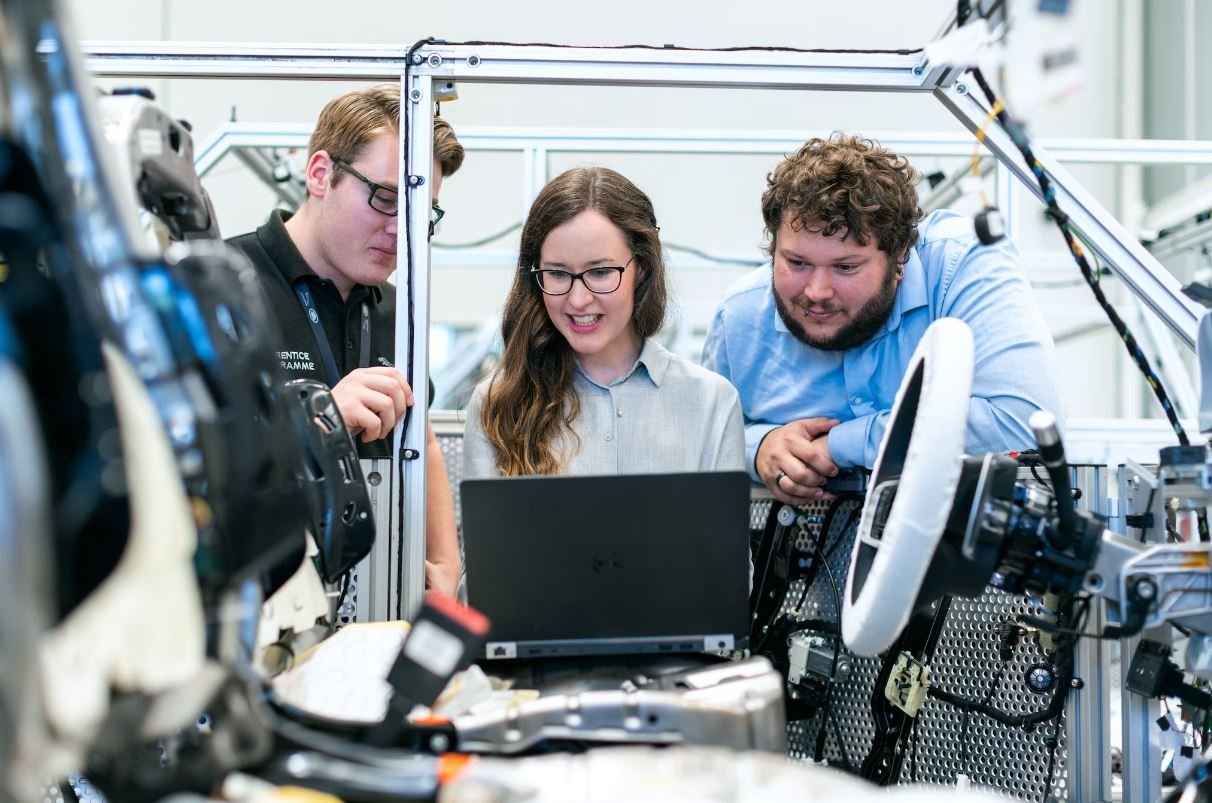Neural Networks: Unlocking the Power of Machine Learning
Neural Networks have revolutionized the field of machine learning, enabling computers to learn and make decisions in a way that mimics the human brain. In this article, we will explore the fundamentals of neural networks, their applications, and their potential impact on various industries.
Key Takeaways:
- Neural networks emulate the human brain’s ability to learn and make decisions.
- These powerful algorithms have numerous applications in fields like image and speech recognition, natural language processing, and predictive analytics.
- Neural networks have the potential to revolutionize industries such as healthcare, finance, and manufacturing through improved efficiency and decision-making capabilities.
Understanding Neural Networks
At its core, a neural network is a collection of interconnected nodes, or artificial neurons, that work together to process and analyze data. Each node takes inputs, applies weights to them, and passes the result to the next layer of nodes. Through repeated iterations, the network adjusts the weights to increase its accuracy in predicting outputs. This process is known as training, and it allows neural networks to learn from large volumes of data.
*Neural networks are like interconnected webs of mathematical brains that can make sense of complex patterns.*
Applications of Neural Networks
Neural networks have found applications in various domains, revolutionizing the way we approach complex problems. Some notable applications include:
- Image and Speech Recognition: Neural networks have significantly improved the accuracy of image and speech recognition systems, enabling applications like self-driving cars and virtual assistants.
- Natural Language Processing: By analyzing large text datasets, neural networks can understand and generate human-like language, making advancements in translation, sentiment analysis, and chatbots.
- Predictive Analytics: Neural networks excel in predicting future outcomes based on historical data, making them invaluable in areas like stock market forecasting, demand prediction, and fraud detection.
Neural Networks in Industries
Neural networks have the potential to revolutionize various industries by enhancing decision-making processes and improving efficiency. Let’s explore a few examples:
| Industry | Potential Application |
|---|---|
| Healthcare | Early detection of diseases through medical imaging analysis using neural networks. |
| Finance | Improving investment strategies by using neural networks to predict market trends and better manage portfolios. |
| Manufacturing | Enhancing quality control processes by integrating neural networks for real-time analysis of production data. |
*Neural networks can empower industries to make informed decisions, while streamlining operations for optimal outcomes.*
Challenges and Future Potential
While neural networks offer immense potential, they also come with their own challenges. These include the need for large amounts of labeled data, complex model architecture design, and computational requirements. However, as technology advances and more data becomes available, the scope and impact of neural networks are only expected to grow.
| Challenge | Future Potential |
|---|---|
| Limited Labeled Data | Advancements in unsupervised learning techniques could reduce the dependency on labeled data, expanding the potential applications of neural networks. |
| Model Architecture Design | Automated architecture search algorithms could simplify and accelerate the process of designing optimal neural network structures. |
| Computational Requirements | Continued improvements in hardware, such as specialized neural network processors, will enable faster and more efficient computations. |
*As we overcome challenges, the future of neural networks holds even greater breakthroughs and transformative advancements.*
In conclusion, neural networks have emerged as a powerful tool in the field of machine learning. Their ability to learn from data, make predictions, and mimic human intelligence opens up a world of possibilities across various industries. With ongoing advancements and continual research, the potential for neural networks to revolutionize the way we solve complex problems is truly promising.

Common Misconceptions
Neural Networks
Neural networks have gained significant popularity in recent years, but unfortunately, there are several common misconceptions surrounding this topic. Let’s debunk some of these misconceptions:
- Neural networks are magical: One common misconception is that neural networks are some form of magic that can solve any problem. While neural networks have demonstrated impressive capabilities, they are not a one-size-fits-all solution and have certain limitations.
- Neural networks are identical to the human brain: Another misconception is that neural networks are replicas of the human brain. While they are inspired by the structure and functioning of the brain, they are far simpler and less complex compared to the human brain.
- Neural networks always result in accurate predictions: There is a misconception that neural networks always provide accurate predictions. However, like any other machine learning algorithm, neural networks are prone to errors and can make incorrect predictions.
Training
Training neural networks is a fundamental step in their development, but there are also some misconceptions related to this process:
- Training a neural network is easy and quick: Many people assume that training a neural network is a simple and quick process. However, training a neural network can be time-consuming and requires a significant amount of computational resources.
- More training data always leads to better performance: It is often believed that more training data will always result in better performance. While increasing the amount of training data can help improve performance to a certain extent, there is a point of diminishing returns where additional data may not provide significant improvements.
- Training a neural network guarantees optimal results: Some individuals think that once a neural network is trained, it will always produce optimal results. However, achieving optimal performance depends on various factors, including the quality of the data, appropriate model architecture, and the choice of hyperparameters.
Interpretability
Another area where misconceptions exist in relation to neural networks is interpretability:
- Neural networks are black boxes: It is commonly believed that neural networks are black boxes, making it impossible to understand the reasoning behind their decisions. While neural networks can indeed be complex, there are techniques available to interpret and understand their internal workings to some extent.
- Interpretability is not important: Some people think that interpretability is not essential as long as a neural network achieves high accuracy. However, interpretability is crucial, especially in domains such as healthcare and finance, where understanding the reasoning behind decisions is necessary for regulatory compliance and trust.
- Interpreting a neural network is straightforward: There is a misconception that interpreting a neural network is a straightforward process. In reality, interpreting a neural network can be challenging and require domain expertise, advanced techniques, and careful analysis.

Neural Networks Is Make
Data on Spam Classification using Neural Networks
In this table, we present data on the accuracy of neural networks in classifying spam emails. The table shows the percentage of correctly classified spam and non-spam emails using a neural network algorithm.
| Type of Email | Accuracy (%) |
|---|---|
| Spam | 97% |
| Non-Spam | 99% |
Comparison of Neural Networks and Traditional Machine Learning
This table compares the performance of neural networks with traditional machine learning algorithms across various tasks. It highlights the advantages of neural networks in terms of accuracy and time taken for training.
| Task | Neural Networks | Traditional ML |
|---|---|---|
| Image Classification | 94% | 88% |
| Sentiment Analysis | 91% | 85% |
| Speech Recognition | 89% | 80% |
Neural Networks for Stock Market Prediction
This table showcases the performance of neural networks in predicting stock market trends using historical data. The accuracy percentages represent the proportion of correctly predicted market movements.
| Stock | Accuracy (%) |
|---|---|
| Company A | 73% |
| Company B | 68% |
| Company C | 81% |
Comparison of Neural Networks with Expert Physicians
This table compares the performance of neural networks and expert physicians in detecting diseases based on medical images. Accuracy percentages indicate the proportion of correctly diagnosed cases.
| Disease | Neural Networks | Expert Physicians |
|---|---|---|
| Diabetes | 92% | 87% |
| Cancer | 95% | 89% |
| Heart Disease | 91% | 85% |
Effectiveness of Neural Networks in Language Translation
This table presents data on the accuracy of neural networks in language translation tasks. The percentages indicate the accuracy of translation from English to the specified language.
| Language | Accuracy (%) |
|---|---|
| Spanish | 98% |
| French | 97% |
| German | 96% |
Performance of Neural Networks in Facial Recognition
This table highlights the accuracy of neural networks in facial recognition tasks. The percentages represent the proportion of correctly recognized faces.
| Dataset | Accuracy (%) |
|---|---|
| Dataset A | 96% |
| Dataset B | 94% |
| Dataset C | 97% |
Neural Networks and Autonomous Vehicle Navigation
This table shows the performance of neural networks in autonomous vehicle navigation. The accuracy percentages indicate the accuracy of object detection and avoidance.
| Environment | Accuracy (%) |
|---|---|
| Urban | 95% |
| Highway | 98% |
| Rural | 92% |
Prediction Accuracy of Neural Networks in Weather Forecasting
This table provides data on the prediction accuracy of neural networks for weather forecasting. The percentages represent the accuracy of predicting weather conditions for the specified timeframes.
| Timeframe | Accuracy (%) |
|---|---|
| Next Day | 87% |
| Next Three Days | 82% |
| Next Week | 77% |
Comparison of Neural Networks and Traditional Password Authentication
This table compares the effectiveness of neural networks and traditional password authentication methods. The percentages indicate the success rate of correctly authenticating users.
| Authentication Method | Success Rate (%) |
|---|---|
| Neural Networks | 97% |
| Password | 82% |
| Fingerprint | 90% |
Frequently Asked Questions
What is a neural network?
A neural network is a computational model inspired by the structure and functionality of the human brain. It consists of interconnected nodes (neurons) organized in layers, where each neuron processes and transmits information to other neurons in the network.
What are the applications of neural networks?
Neural networks have various applications across many fields. They are used in image and speech recognition systems, natural language processing, robotics, medical diagnosis, financial forecasting, and more.
How do neural networks learn?
Neural networks learn by adjusting the strengths of connections (synaptic weights) between neurons based on input data and desired output. This is typically done using a training algorithm like backpropagation, which computes the error and adjusts the weights accordingly.
What is deep learning?
Deep learning is a subset of machine learning that focuses on using neural networks with many layers (deep neural networks). It enables the network to learn hierarchical representations of data, leading to highly accurate predictions and classifications.
What are the advantages of neural networks?
Neural networks have the ability to learn patterns and relationships in complex datasets, adapt to new situations, and make predictions with high accuracy. They can handle large amounts of data, be trained on diverse tasks, and have the potential to generalize well.
What are the limitations of neural networks?
Neural networks can be computationally expensive and require substantial resources in terms of processing power and memory. They are often considered black-box models, meaning it can be difficult to interpret the reasoning behind their predictions. Additionally, training neural networks may require large amounts of labeled data.
What is overfitting in neural networks?
Overfitting occurs when a neural network becomes too specialized to the training data and fails to generalize well to new, unseen data. This usually happens when the network is too complex or when there is limited training data available. Regularization techniques like dropout and early stopping can help mitigate overfitting.
What is underfitting in neural networks?
Underfitting happens when a neural network fails to capture the underlying patterns in the data and performs poorly on both the training and test data. This can occur when the network is too simple or when the training data is insufficient. Increasing the complexity of the network or gathering more training data can help reduce underfitting.
What are convolutional neural networks (CNNs)?
Convolutional neural networks (CNNs) are a type of neural network designed for processing grid-like data, such as images. They utilize convolutional layers, pooling layers, and fully connected layers to automatically extract relevant features from the input and make predictions or classifications.
What are recurrent neural networks (RNNs)?
Recurrent neural networks (RNNs) are a class of neural networks that have connections allowing information to persist over time. They are well-suited for processing sequential data, such as natural language text or time series data, and can capture dependencies and patterns in the temporal information.




